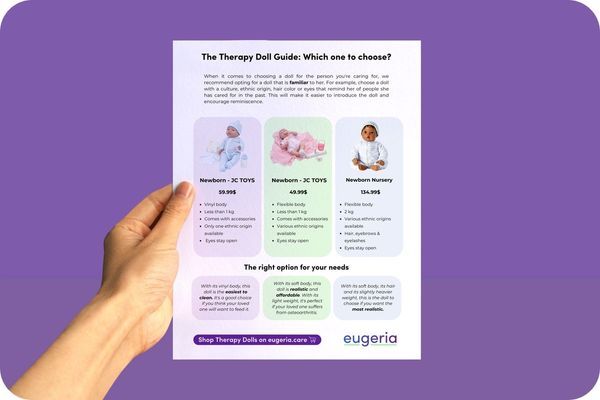Doll therapy is a non-pharmacological intervention gaining recognition for its positive impact on individuals living with dementia. Non-pharmacological interventions are non-medical approaches used to manage symptoms and improve well-being, focusing on methods such as activities, therapy, and environmental adjustments rather than medications.
By offering comfort and reducing anxiety, therapeutic dolls provide a unique way to enhance the quality of life for those in the mid to late stages of dementia. This guide explores the benefits, best practices, and tips for effectively implementing doll therapy.
The Benefits of Doll Therapy
Non-pharmacological interventions to assist those who are aging are increasingly desirable and have been shown to provide a much higher quality of life and care for those who are going through the mid to late stages of dementia (de Sa-Caputo, 2023). One amazing intervention that has been beneficial for those in dementia care is the use of doll therapy. Although it may appear to be demeaning or childish to those looking in, doll therapy is rooted in scientific research, and the benefits of utilizing it in care garner wide-reaching results.
People who are living with dementia often experience intensive attachment with those who care for them (Martin-Garcia, 2022). Unpredictability, new people, and new experiences can easily become overwhelming for them, creating unmet needs and sparking reactive situations. These situations can appear as restlessness, frequent attempts to leave, refusing food and/or care, loud outbursts, and more. Such reactions are a lot of work for the care staff to properly manage while attempting to help several other residents at once.
By introducing doll therapy, studies have proven that the attachment between residents and care staff is essentially replaced by the action of caring for the doll, freeing up the caregiver's ability to care for more people at once.



